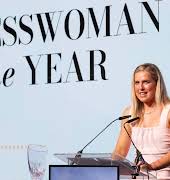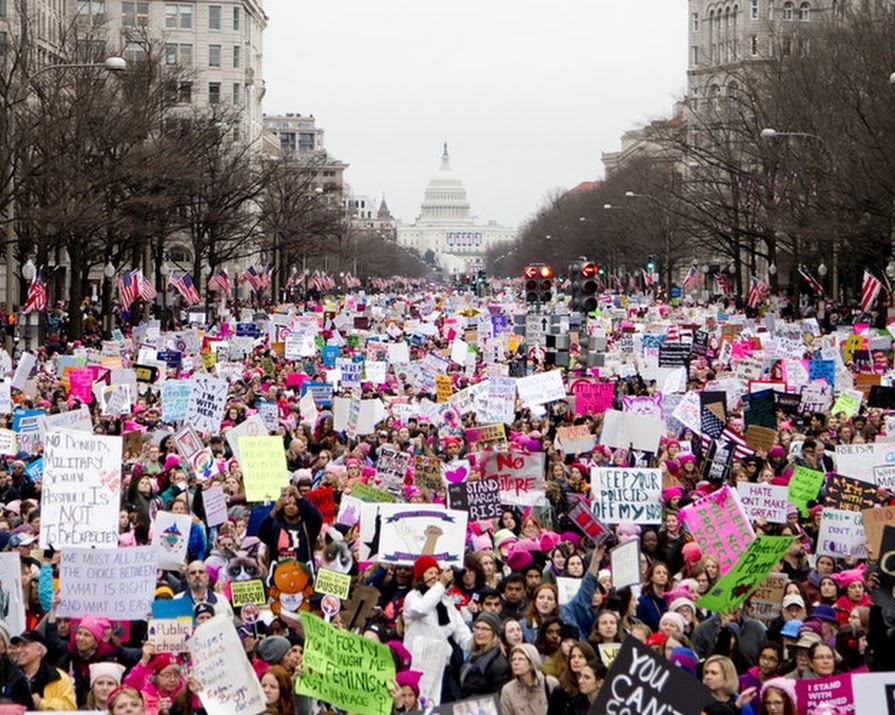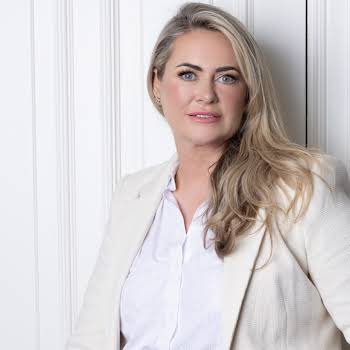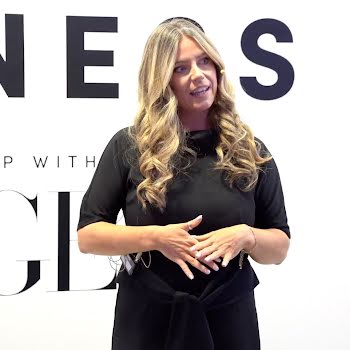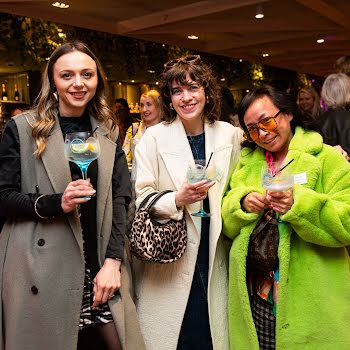
By Erin Lindsay
07th Oct 2018
07th Oct 2018
This week on Twitter, New York Times investigative journalist Jodi Kantor tweeted a candid photo of her and her colleagues at work exactly a year beforehand. They were captured in the exact moment of pressing ‘publish’ on the story of allegations of sexual assault against film producer Harvey Weinstein. Kantor said that they were “unsure of what would happen next”. So were we.
This was us, exactly a year ago today, about to push the button on the Weinstein story, unsure of what would happen next. pic.twitter.com/WNljiNySXy
— Jodi Kantor (@jodikantor) October 5, 2018
The picture took me by surprise when I saw it on my timeline – I couldn’t believe that it had only been a year. The impact of that story – the ensuing allegations; the ever-growing list of men accused of sexual misconduct; the protests; the rapid growth of the #MeToo and #TimesUp movements – shook the earth enough for a lifetime in just 12 months. The way in which we discuss consent, sex and victims of assault and rape has completely transformed since October 2017.
Or at least, one would like to think it has. As I write this piece, it has just been announced that Brett Kavanaugh has been appointed as a US Supreme Court Judge, after a week of hearings in which he was publicly accused of sexually assaulting Dr Christine Blasey Ford, a university professor, at a party when they both were in high school. Despite public outcry at the hearings, and current outrage over the final decision, Kavanaugh won.
So, how much has changed in this one year since Weinstein? While every allegation sparked a new and equally important conversation throughout the year, one can almost pinpoint the turning points in the winding road – the stories that shaped our current view.
Harvey Weinstein
This time last year, the New York Times reported that more than a dozen women had accused of Harvey Weinstein of sexual misconduct, ranging from harassment to assault to rape. That number eventually rose to almost 90 women. In the wake of the allegations, Weinstein was fired from his production company, expelled by from the Academy of Motion Picture Arts and left by his wife, before being charged with rape, sex abuse and sexual misconduct against two separate women in May of this year.
The Weinstein allegations sparked a national movement against the prevalence of sexual abuse in the entertainment industry, and, later on, across multiple industries across the world. Victims of Weinstein, including Rose McGowan, Alyssa Milano and Uma Thurman, became international spokespersons for the movement, and encouraged victims of sexual assault worldwide to come forward. Perpetrators of sexual abuse in the entertainment industry began to finally be held accountable for their actions, as the movement demanded the dismissal of these men from their positions of power. This movement, of course, was called #MeToo.
Tarana Burke and the #MeToo movement
While the Weinstein allegations are commonly seen as the founding moment of #MeToo, the hashtag was actually being used online as early as 2006. Social activist Tarana Burke had been using the tag as part of a campaign to bring together women of colour who had experienced sexual abuse on MySpace. It was only in 2017, when actress Alyssa Milano encouraged the use of the tag in response to the Weinstein allegations, that it hit the mainstream.
Millions of users across the world shared their stories of assault and rape, sparking conversations about consent and misogyny – both on international stages, and at kitchen tables. Women revealed to the world what they had been dealing with for generations, and the world, at long last, responded.
And another, and another, and another…
Bill Cosby. Louis C.K. Kevin Spacey. Dustin Hoffman. Names poured from Hollywood, names we had previously known and loved were shown in the cruel light of a post-#MeToo world – where they couldn’t hide from responsibility any longer. It seemed that sceptical voices might finally quieten and listen to the women telling their stories. Until they heard a story they didn’t like.
Aziz Ansari
With a movement as massively impactful as #MeToo, a pushback was inevitable, and it came in the form of an article on online publication Babe.net. An anonymous woman (using the pseudonym ‘Grace’) told her story to Babe of how she went on a date with comedian and actor Aziz Ansari, which turned “into the worst night of [my] life”. She alleged that Ansari repeatedly tried to initiate sex with her at his apartment, despite her hesitations and discomfort. She left and messaged Ansari to say that he had made her very uncomfortable with his actions, to which he apologised.
The story was polarising. While ‘Grace’ did not accuse Ansari of rape, her story came at a time of global reckoning of what consent really means, and many did not agree with her definition. Silent critics of #MeToo took the opportunity to loudly lambaste the movement as a whole, suggesting that many victims did not take responsibility for their actions, and trivialised ‘real’ victims of rape and assault. Others praised Grace’s story, saying that Ansari’s actions were reflective of a larger culture of misogyny and expectations of emotional labour from women.
The story marked a turning point in how people thought about consent. Before it, there was no doubt that the likes of Weinstein and Cosby were the bad guys. But now, what if ordinary men, who ignored subtle signals of discomfort, who expected sex as a given from women, could be the bad guys too? The conversation widened.
Terry Crews
The global conversation around rape and assault was a moment for women. But men had silently suffered in the pre-#MeToo world too. Even a man as unexpected as Terry Crews.
In 2017, Crews revealed that he had been groped by a Hollywood executive at a party the previous year. Despite his outrage, he didn’t retaliate because he feared the repercussions on his career. His experiences echoed that of millions of women; something that he acknowledged consistently in his ensuing campaign as a male face of #MeToo.
Why didn’t you say something?
I did.
Why didn’t you push him off?
I did.
Why didn’t you cuss him out?
I did.
Why didn’t you tell the police?
I did.
Why didn’t you press charges?
I did.
Why did you just let it happen?
I didn’t.
Why didn’t you beat him up?
(Sigh)
— Terry Crews (@terrycrews) June 29, 2018
Crews has continuously campaigned on behalf of victims of sexual abuse since then, but has been an advocate for women’s rights for years, citing his family’s history of domestic violence and his own struggles with internalised misogyny as the catalysts for change in his attitudes towards women. Terry Crews provided a much-needed male figure in the #MeToo movement – someone to say that ‘this happens to us too, and it’s okay to talk about it.’
Asia Argento
As men can be the victims, so too can women be the perpetrators. And women who perpetrate sexual abuse can be victims of it too. This collection of paradoxes was entirely summed up in actress Asia Argento. As one of the key voices of #MeToo, Argento was one of the most vocal accusers of Harvey Weinstein, and campaigned continuously against sexual assault and abuse. Until she became the accused herself. This summer, the New York Times reported allegations that Argento had sexually assaulted Jimmy Bennett, an actor who had played her son in a film in 2004, in 2013. She was 37 and he was 17. Argento reportedly gave Bennett alcohol before having sex with him. She later reportedly paid him $380,000 as a settlement.
How could a woman who was such an advocate against abuse, be an abuser herself? Can a victim be a perpetrator? Can we identify with one part of a person, while being horrified at the other? Difficult questions, not yet answered – Asia Argento still denies sexually attacking Jimmy Bennett, and many of her #MeToo colleagues have found it difficult to reconcile the allegations against her.
One year on
A year on from the Weinstein allegations, the world is in a state of flux when it comes to how it views women and sexual autonomy. Before that story broke, women publicly declaring their experiences of sexual abuse, and having public support waiting for them on the other side, was not the norm. We now live in a world where a woman can tell her story, and not have to feel shame. But we also live in a world where a US President may mock her, and question her ability to remember details. A woman can have thousands of peoples’ support, with protests and marches and rallies in the name of justice and truth. But the man who she says attacked her still gets the job.
We live in a world where everything has changed, yet it often feels like nothing has at all.





